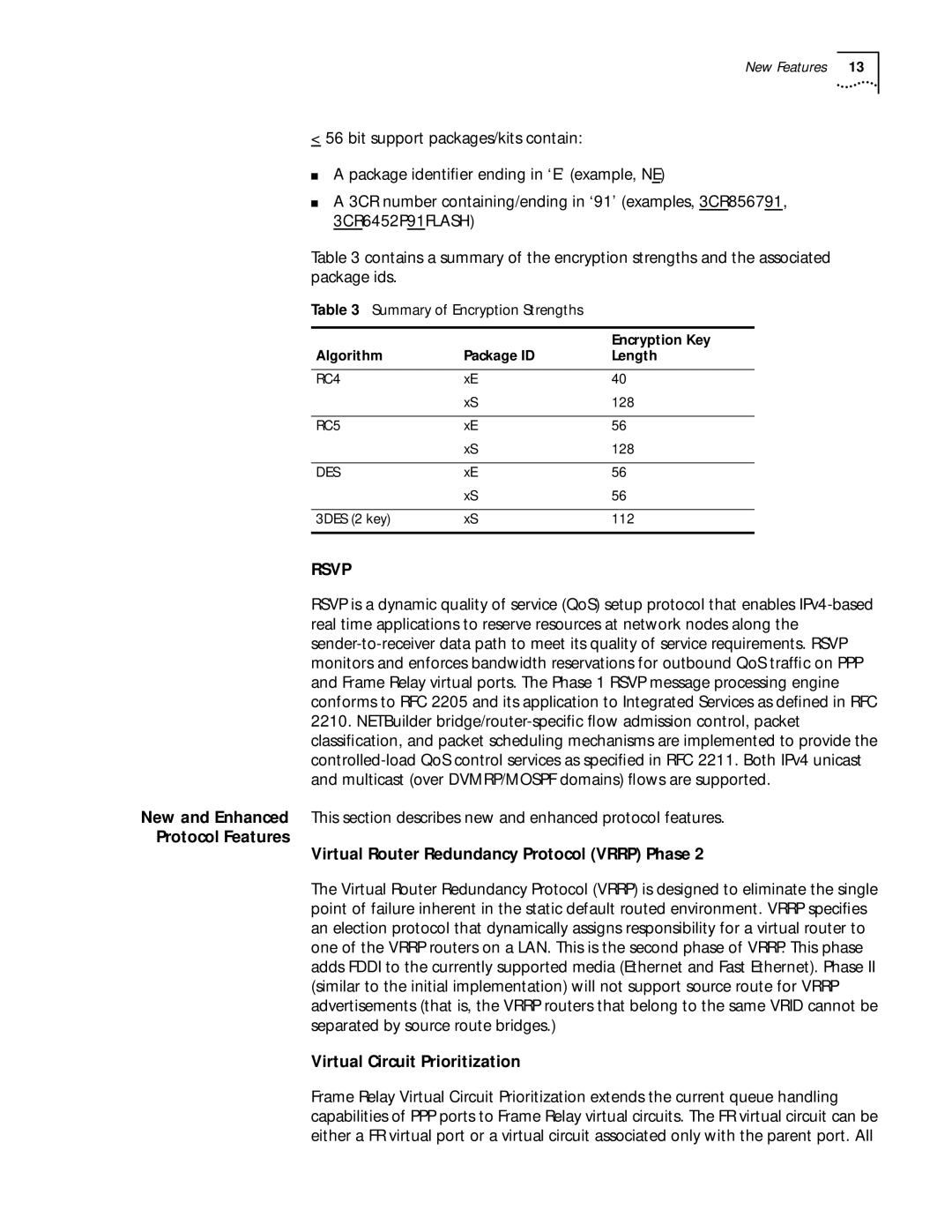
New Features 13
<56 bit support packages/kits contain:
■A package identifier ending in ‘E’ (example, NE)
■A 3CR number containing/ending in ‘91’ (examples, 3CR856791, 3CR6452P91FLASH)
Table 3 contains a summary of the encryption strengths and the associated package ids.
Table 3 Summary of Encryption Strengths
|
| Encryption Key |
Algorithm | Package ID | Length |
|
|
|
RC4 | xE | 40 |
| xS | 128 |
|
|
|
RC5 | xE | 56 |
| xS | 128 |
|
|
|
DES | xE | 56 |
| xS | 56 |
|
|
|
3DES (2 key) | xS | 112 |
|
|
|
RSVP
RSVP is a dynamic quality of service (QoS) setup protocol that enables
New and Enhanced This section describes new and enhanced protocol features.
Protocol Features
Virtual Router Redundancy Protocol (VRRP) Phase 2
The Virtual Router Redundancy Protocol (VRRP) is designed to eliminate the single point of failure inherent in the static default routed environment. VRRP specifies an election protocol that dynamically assigns responsibility for a virtual router to one of the VRRP routers on a LAN. This is the second phase of VRRP. This phase adds FDDI to the currently supported media (Ethernet and Fast Ethernet). Phase II (similar to the initial implementation) will not support source route for VRRP advertisements (that is, the VRRP routers that belong to the same VRID cannot be separated by source route bridges.)
Virtual Circuit Prioritization
Frame Relay Virtual Circuit Prioritization extends the current queue handling capabilities of PPP ports to Frame Relay virtual circuits. The FR virtual circuit can be either a FR virtual port or a virtual circuit associated only with the parent port. All
